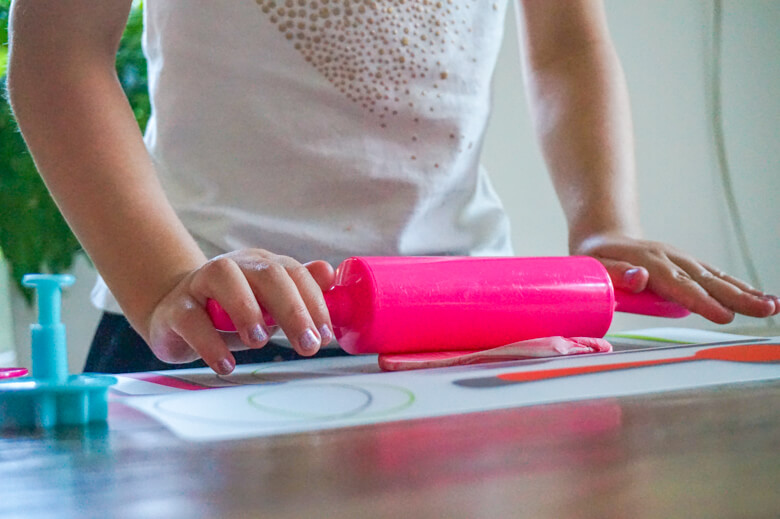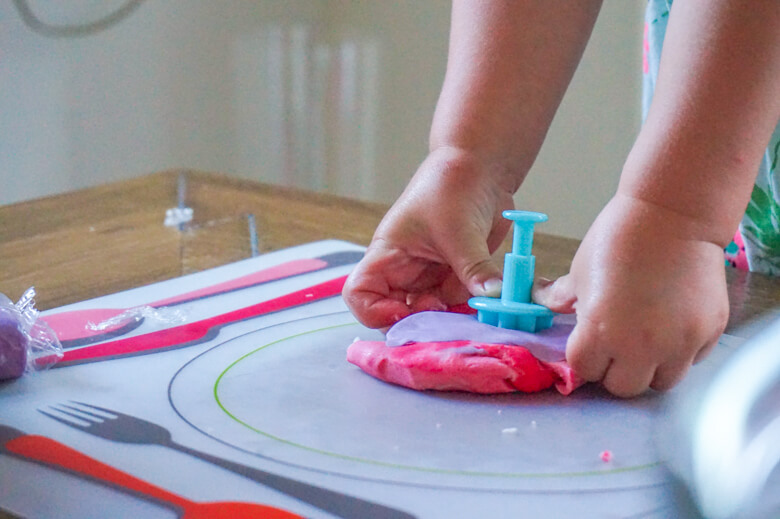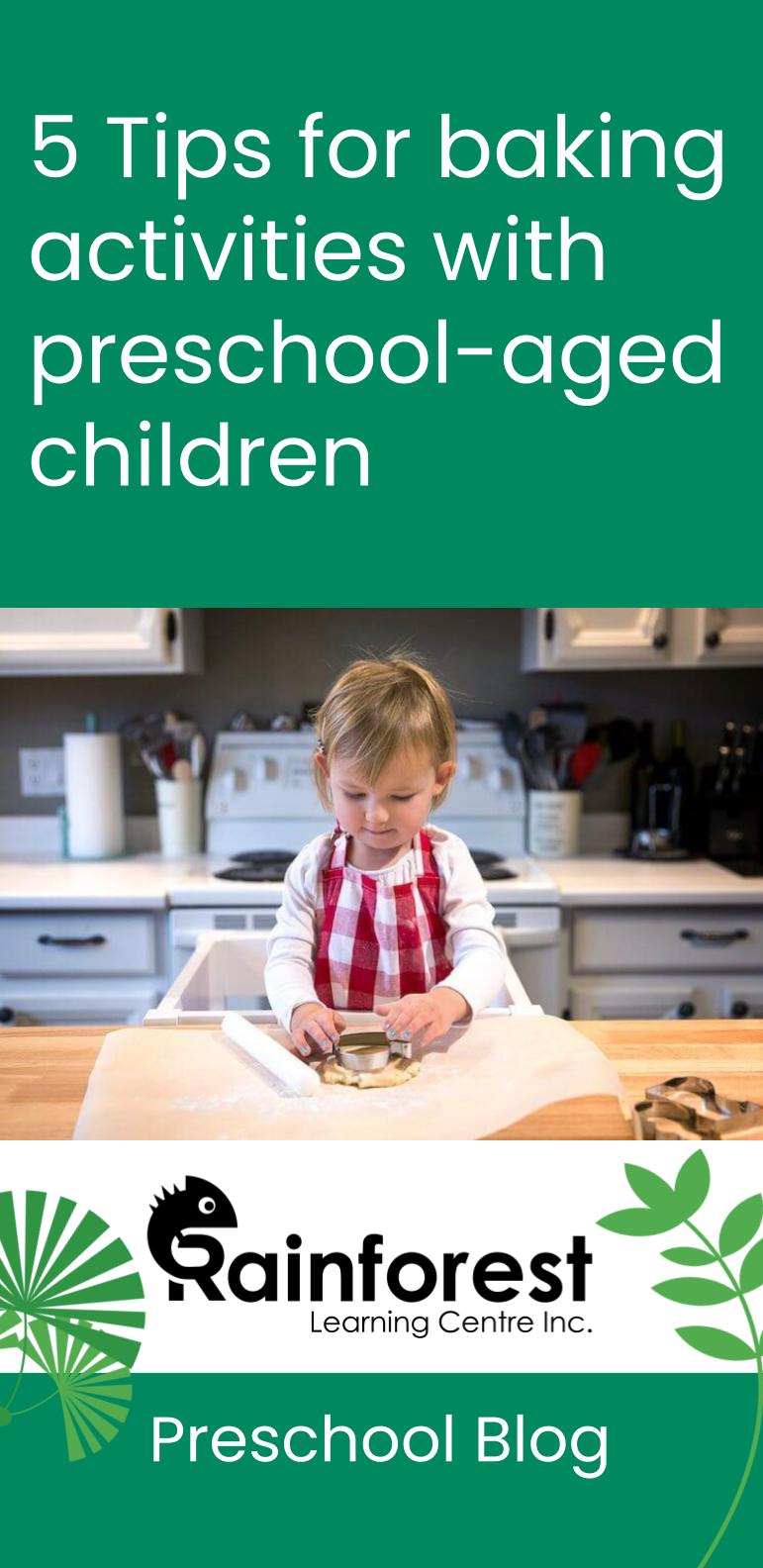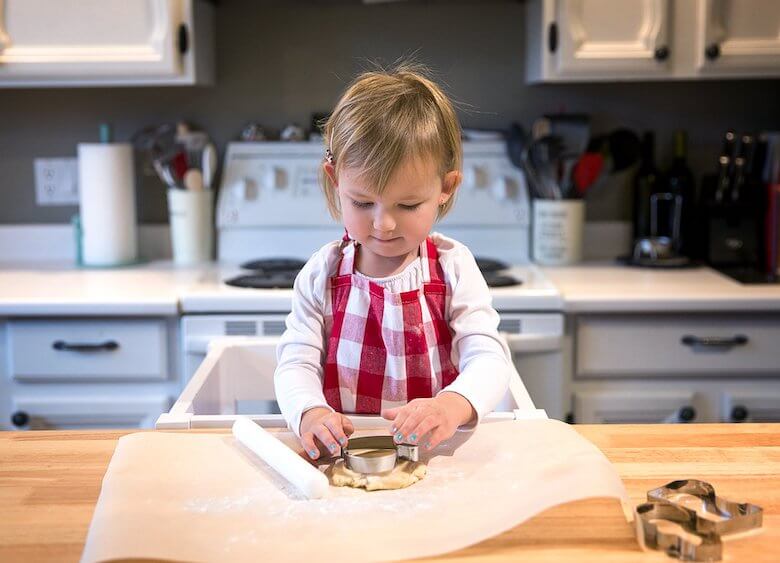
Baking activities with preschool-aged children can sound like one of two things: a wonderful way to keep children occupied, or a terrible way to mess up your kitchen. If you were pondering whether or not go ahead with this idea, we have some tips to share!
1) When baking with preschoolers, edible food is not the goal; the process is most important
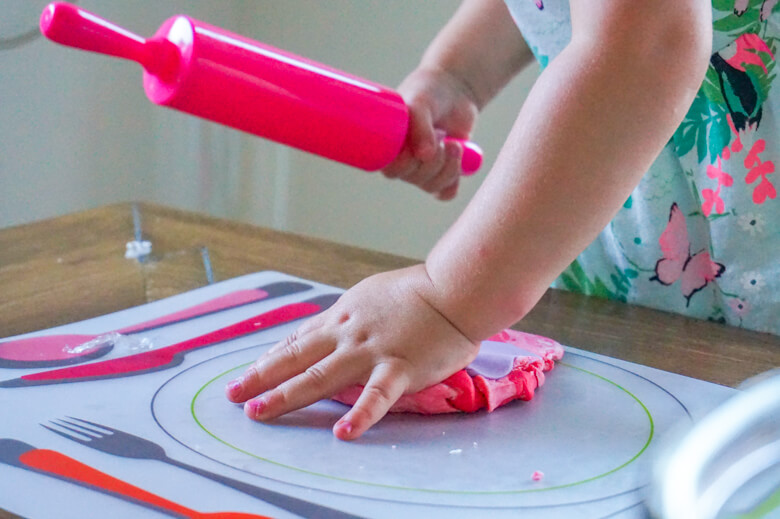
If you have 20 dinner guests to entertain tonight, you may want to think twice about inviting your preschooler to help you make the ‘real’ pie for dessert. However, if you are looking for an afternoon activity to have fun with little ones – whether at home or at daycare – you’re on the right track.
Baking with preschoolers is about having fun and letting them explore sensory simulators. Dry, soft flower, hardened chocolate chips that melt in your hand, and gooey or kneady dough are all examples of sensory stimuli. They help children develop fine motor skills.
When children learn how these types of materials behave, they learn how to work with them, too (they mimic other real-life situations). They build hand muscles, learn new vocabulary, and experience the wonders of living life, in general. They learn things, even without you having to verbally teach them anything!
We wrote about this topic at the following blogs on our website:
- Why sensory development skills are important at daycare
- 5 examples (types) of informal education in early childhood
- What is experiential education in early childhood, and why is it important?
- The benefit of process art in preschool classrooms
This is all to say: when baking with preschoolers, don’t worry about the end result. It’s not nearly as important as the experience that children go through to make their pseudo version of a cake, pie or cookie. Just let ‘life’ happen in your kitchen, and nothing more or less. Be ‘in the moment.’
And, if you were really looking forward to dessert, keep a backup stash somewhere handy! Ha!
2) Baking with preschoolers is messy, and that’s a wonderful thing (you can prepare for easy cleanup)
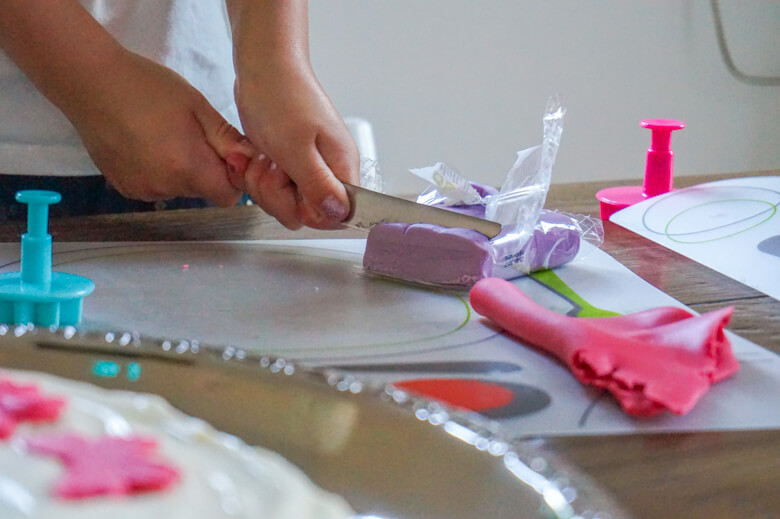
Yes, it’s stressful to think about the enormous clean up you’ll have to do after inviting preschoolers to bake with you. That fear compounds when there are multiple children involved in the baking lesson! However, if you mentally prepare yourself to think positively about this, you may not mind the clean up so much (or, we hope!).
Just remember: getting messy can actually be good for children. Yes, it’s a good thing! We wrote an article about this at the following link:
If you put yourself in the shoes of a child, you’ll quickly realize that it would probably be great fun for adults to spill powdery flour all over the place and pretend it’s snow. Of course, don’t tell your children that! But, just keep that thought top of mind; this is living life and making memories. There’s no need to cry over literal, spilt milk. Clean up is just that: cleaning up. It’s not disastrous, and it’s not that hard (in most cases!).
But, there are ways you can prepare for a messy day in the kitchen. For example, you can put mats on the floor, so you can easily ‘scoop up’ the mess that gravity will demand of childhood activity.
You can also give children an apron to wear (or just clip a sheet on them with laundry pins and tell them they are superheroes). Very young children should be strapped into a high chair of some sort, to keep them, and their creations, steady.
Also: you can ask the children to help with the clean up! They can learn to sweep, wipe with water, wash their hands and put things away.
3) Teach children about food safety and cleanliness, then hope that the words ‘stick’ (pun intended!)

Baking can involve raw ingredients (including flour!), which you won’t want children to be putting in their mouths. They can otherwise develop food-borne illness. Baking can also involve cross contamination. This is especially if the children themselves are not aware of good hygiene and cleanliness ‘rules’ (which, let’s face it, is most likely the case).
So before you get started, have a little ‘sit down’ session where you look children in the eye. While locking eyes with theirs, calmly and clearly explain that during this activity, they should not put fingers in their mouth. They must also wash their hands for 20 seconds before beginning this activity. And, they can’t touch anything else while they’re baking, unless the teacher or mom says so; no toys, no floors, no people – nothing.
We strongly recommend you have this little chit chat with the preschoolers before they catch a glimpse of the very exciting baking ingredients you have in store for them. This way, they’ll more likely focus on your face, rather than whatever is in front of you, or behind you.
Need some tips on how to teach children about this topic? We wrote about it at the following blogs on our site:
- Teaching daycare kids about food safety
- Teaching early learners about food cross contamination and cleanliness
4) Start with easy-peasy, short-ingredient recipes for kid’s baking projects

Attempting to make a layered wedding cake with a bunch of preschoolers probably won’t catch their attention for very long. Early learners like to ‘bait and switch’ very quickly with their attention spans (except when you need them to).
Very young children also can’t take in a lot of information. At around three years old, they may have just learned how to comprehend two-or-three step instructions. So, it’s best to keep all things as simple as possible for the little ones, let alone baking.
For that, we have the wonders of the Internet. Search for “3 ingredient recipes” and you’ll be rained upon with an abundance of visually-appealing, fantastic ideas for baking the easiest of goodies. In fact you’ll want to adapt this method for grown-up baking, too!
There are also “no-bake recipes,” “recipes for kids,” “toddler recipes” and a myriad of other search phrases you can try. Hey, put in the ingredients you have on hand, and see what comes up!
We could list a bunch of these recipes here, but that would probably be aimless. Mr. Google and all the mom chefs in the world have done a good job of this already. But we can lead you in the right direction!
Try:
- Rice crispy squares (which can be made with other cereals and crackers)
- Protein balls (such as peanut butter balls)
- Bread with sweet toppings (the Dutch have a culture of doing this, with items like hagelslag sprinkles, butter, peanut butter, jam, Nutella, marshmallow spread, speculoos butter, anise powder and more)
- Popsicles
- Chocolate-dipped strawberries or bananas
- Mug cake (these have more than three ingredients most of the time, though. Try this one with no egg)
- Simple sugar cookies (like this one)
- Jell-O (premixed, of course!)
Here are a bunch of 3-ingredient baking recipes from Brit + Co.
And, here are a bunch of 3-ingredient recipes (not just baking recipes) from Tasty.
5) Don’t interfere (most of the time), but you can do the prepwork so the children can have the fun
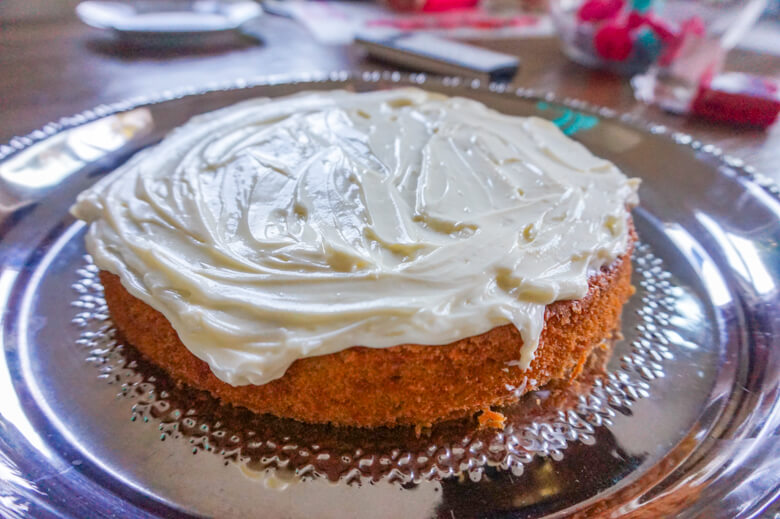
Now, when you bake with preschoolers, it’s super important not to try to do everything for them. Remember: it’s the process that counts (just breath through it). So please, DON’T help them. Let them do it. If they do it wrong, it doesn’t matter.
Buuut… sometimes you have to do some parts of this. For example, mixing a tough dough can be really hard. If the kids don’t have muscle strength for it, and there’s no mixer in the kitchen, you can offer to help (but only if they look like they’re really not having fun).
When a recipe is especially complex, or you are short on time, you can also do most of the prep work. This way, you can hand over some ready-to-decorate dough (or baked cake) and let the kiddos have at it. Afterall, this is the fun and creative part, right? This is a common preschool holiday activity (such as decorating gingerbread houses, or cookies).
Pick up some cake or cookie decorating ingredients from the grocery store, such as:
- Chocolate chips (or candy-covered chocolate chips, like Smarties or M&Ms)
- Sprinkles (chocolate and coloured)
- Small, hard candies
- Mini marshmallows
- Ground nuts
- Fondant (in many colours)
- Marzipan
- Icing tubes
- Icing sugar
- Colouring gels
And so on.
Plus, don’t forget to keep the following equipment on hand:
- Cookie cutters in many shapes.
- Piping bags (you can also soft spread peanut butter through a ziplock bag with the corner cut, if you don’t have icing or a piping bag)
- Popsicle sticks (or toothpicks, or a set of popsicle moulds)
- Muffin and cake pans in various shapes and moulds
- Muffin liners
- Mini tongs
- Baking equipment that is made for kids, such as dull playdough-style knives, forks and rollers. Don’t forget a whisk, spatula and measuring spoons or cups. Pastry wheels and embossing pin rollers are also great fun.
And so on.
Finally, enjoy your treats, no matter how they look!

After your momentous preschool baking activity is over, you’ll have the satisfactory reward of eating your creations! Sure, they may not look like a pastry chef’s best work. But, they’ll probably seem tastier than some of the baking flops we’ve seen on reality TV food shows!
As long as they’re edible, don’t worry about what they look like. Just be proud of what the children accomplished that day. Let them know how much fun you had making memories with them.
Oh, and when night falls, don’t forget your dental hygiene :)
